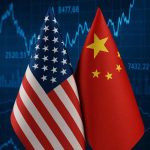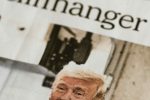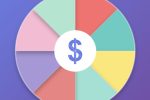Gold has shattered expectations and climbed past the $4,300 per ounce mark, setting a stunning new all-time high. What once felt like an almost mythical price today reflects a powerful wave of investor sentiment driven by fear, uncertainty, and the belief that central banks especially the U.S. Federal Reserve will soon pivot toward monetary easing. This milestone reveals more than just a price point: it signals a psychological shift in markets.
In recent weeks, geopolitical turbulence has intensified. Trade friction between the United States and China has reignited, with both sides threatening harsher tariffs and tighter export controls. Coupled with ongoing government shutdown concerns in Washington, and fragile growth data, the environment is fraught with uncertainty. Capital, always sensitive to risk, has begun retreating toward safe havens and gold shines brightest in that paradigm.
At the same time, the hopes for rate cuts have become entrenched. Markets are now pricing in a near-certain 25 basis point cut in October, followed by another in December. That expectation has rendered fixed income less attractive, weakening yields and raising the appeal of a non-yielding asset like gold. In that light, gold is no longer simply a hedging tool; it is front and center in macro positioning.
Institutional flows have played a critical supporting role in this rally. Major funds and exchange traded vehicles dedicated to gold have seen significant inflows, reinforcing momentum and attracting more capital. Central banks, too, continue to quietly but steadily accumulate reserves. Their purchases act as a demand anchor, reducing the risk of sharp downside moves. This accumulation is often viewed as part of a structural pivot away from dollar reliance, adding another long-term layer to the price foundation.
But the human element is what makes this story resonate. Investors are wrestling with more than charts and forecasts. They are reacting to headlines of trade wars, political gridlock, inflation pressures, and whispers of recession. Every uneasy press release, every surprise economic print, every shift in yield curves reminds participants how fragile the present setup feels. Gold in this moment becomes more than a metal it becomes a barometer of trust, a quiet refuge amid stormy seas.
From a technical perspective, the break above $4,000 felt symbolic. But piercing $4,300 is transcendent. It speaks to conviction, and to the idea that investors now see less risk in holding gold than not holding it. Even if short-term corrections emerge, the underlying energy seems too strong to dismiss.
For those who observe markets through a storytelling lens, this is a pivot. It is a reconfirmation that in times of extreme uncertainty, real assets regain their old call. It is a reminder that monetary policy is a psychological game as much as an economic mechanism. And it is a challenge to all who doubted gold’s relevance in a digital and rates-obsessed world.
As we look ahead, the key variables to watch are central bank signals, inflation surprises, and the progression of global geopolitics. If rate cuts come and trade tensions escalate further, gold could be just beginning its climb. If those forecasts disappoint, we may see a pause or pullback but the line in investor psychology may already have been redrawn.
In short, gold at $4,300 is not just a headline. It is an inflection point. It captures a moment when fear overtook complacency, when investors demanded conviction over convenience, and when the storied yellow metal reclaimed center stage in global finance.









